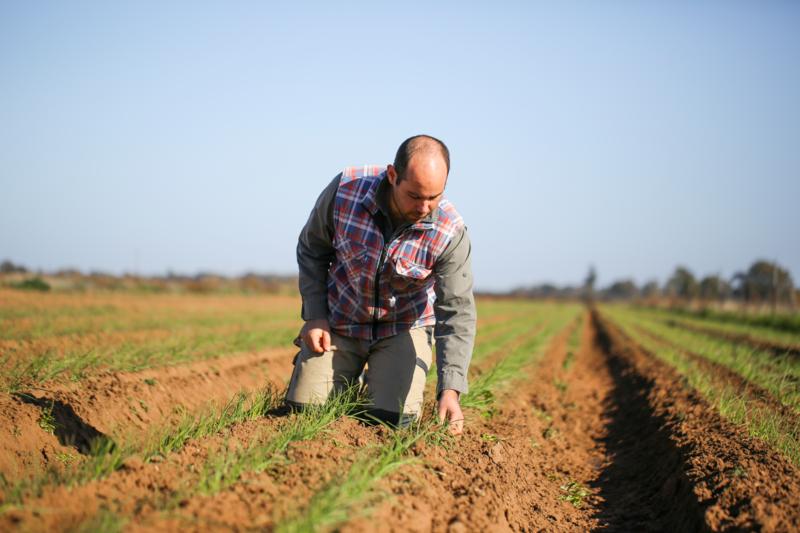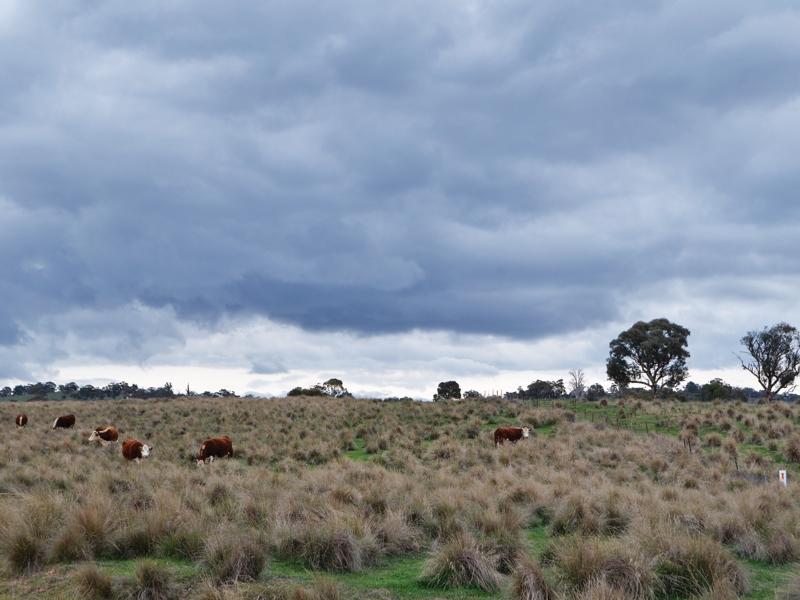WHEN the new native vegetation legislation codes commenced in August 2017, producers in the Monaro region were dismayed to discover satellite mapping had been used to regulate vast swathes of the local grasslands. It turns out satellites cannot distinguish between native and introduced pasture species.
In an area under enormous pressure from invasive weeds such as African lovegrass and serrated tussock from South America, the new laws prevented producers from managing regulated areas.
“When the Office of Environment and Heritage [OEH] brought out the draft maps, at least 70% of the Monaro was regulated,” says Richard Taylor, chair of producer group Monaro Farming Systems. “It was very untargeted: essentially they were throwing a blanket over most of the agricultural land to make sure they captured the 5% or 10% that are higher-conservation grasslands areas.”
RELATED ARTICLES:
- Putting a price on conservation
- Native vegetation mapping controversy
- North Coast berry farmer embraces new native vegetation codes
He says the new legislation shifted the burden of proof from the OEH to the farmers. “Under the new Act, if you sprayed out a pasture area that was regulated, you breached the Act. It didn’t matter if it was native. There was no onus on the part of the OEH to prove that they were native grasslands,” Richard says.
FARMERS HIGHLIGHT BIOSECURITY ISSUE
The response from farmers was swift. Representatives from NSW Farmers and Monaro Farming Systems met Local Land Services (LLS) and the OEH and told them the regulation was unworkable.
LLS group director of the Sustainable Land Management unit Kristian Holz took their issues on board.
“There was real concern whether the technology could discern if land had been farmed or if it was untouched high-conservation grassland. The short answer was no, the technologies being proposed by the OEH at the time weren’t able to discern that.”
“That prompted me to go there in August 2017. In that first meeting, other issues were put on the table and we thought, whoa, these are really region-specific issues.”
Monaro grazier Michael Green was at the meeting and says he and other farmers stressed the serious biosecurity issue posed by their inability to manage invasive weeds, particularly African lovegrass.
.jpg)
THE “IDEAL WEED”
Dr Lachlan Ingram, senior lecturer in grassland management at the University of Sydney, studies African lovegrass. “In many respects it is the ideal weed,” Dr Ingram says. “It’s very aggressive. It will often start growing before a lot of other species.”
*READ more about biosecurity issues and pest management:
- Farmers fight shattercane
- Biosecurity must be upheld if grains are imported into Australia
- Industrious beekeepers nurture thriving family business
- Oyster theft no small issue for farmers
- Kicking up a stink: what’s bugging our biosecurity experts?
- Fair game on feral deer
“It sets huge amounts of seed, hundreds of thousands per plant, and once it gets in there, it takes out everything else.”
LLS worked with the OEH to negotiate the removal of grasslands from the regulatory mapping release until a more reliable mechanism could be identified. It set up quarterly meetings with Monaro farmers, and a Monaro Grassland Landholder Reference Group was formed to deliver a pilot program.
Mitchell Clapham, chair of NSW Farmers’ Native Vegetation Working Group, says the Association lobbied the government extensively. “We need to come up with a viable solution to allow farmers to manage their grasslands,” he says. “It was clear what they had in their legislative change was not going to fit.”
GRASSLANDS IN SPOTLIGHT UNDER PILOT PROGRAM
In April 2018, following a meeting in Cooma with local farmers and LLS representatives, Monaro MP John Barilaro announced $375,000 in funding to help create long-term strategies to improve productive agricultural land and the environmental landscape in the region. While the bulk of the money will go to research and resources to ensure regulations are regionally specific, $75,000 will go towards Monaro Farming Systems’ work with LLS.
They are working together on a pilot project to determine a better way to identify higher-conservation grasslands and develop best-practice weed management on the Monaro. “NSW Farmers was instrumental in getting the pilot project up,” says Michael Green. “They got the bureaucrats out to see the farmers and hear first-hand what was happening.”
Kristian Holz from LLS says: “Farmers want clear guidance on when they can intervene, and the earlier, the better in relation to African lovegrass. Secondly, they need a management technique like a herbicide or physical disturbance that is effective. If there isn’t one, we need to develop one.”
“I got the sense in Cooma that some farmers have developed techniques that might be quite effective.”
AFRICAN LOVEGRASS PROBLEM ‘GETTING WORSE’
As part of the funding, local agronomist Stuart Burge was hired to develop management guidelines for the grasslands. His report, The Monaro Kangaroo Grass Strategy, delivered in August, used kangaroo grass, an iconic native, as an indicator species to help determine the conservation value of the grasslands.
Stuart found the severity of lovegrass had escalated in the past five years and noted that, unlike kangaroo grass, it was extremely tolerant of continuous heavy grazing. While regulations provide a safety net to prevent clearing of native grasslands, Stuart says, getting farmers to understand and help is the only hope for saving the Monaro grasslands from permanent decline.
 Biosecurity is vital for NSW Riverina organic vegetable grower Brendan Murray.
Biosecurity is vital for NSW Riverina organic vegetable grower Brendan Murray.
The drought has put the brakes on the pilot project. “The pilot project had an expected lifespan of a couple of years, but with the current weather conditions, no-one knows,” grazier Michael Green says.
“For all the discussion in Sydney over how many plants per hectare and so on, when you actually see the ravages of drought, dust storms everywhere, the wipe-out of all species, you have to be flexible. There’s nothing happening at the moment. When it doesn’t rain, nothing grows.”
COUNCIL AND WEEDS OFFICERS TO MAP SPREAD OF LOVEGRASS
When the rain does fall, the pilot will use the shire council and weeds officers to map the spread of lovegrass. “We’ll be looking at management practices on properties where lovegrass has been endemic and what has brought it under control,” Michael says.
Just as important will be cementing relationships between government and farmers, says Kristian Holz. “Where were we 12 months ago? There was frustration, there was anger, there was no collaboration or trust. But by continuing to engage, we’ve really turned a corner.”
Michael agrees the level of cooperation and the establishment of three-monthly meetings were very positive. “We’ve got local farmers at the table with the LLS and we’re just talking there like people who are land managers. It’s taken any antagonism out of it and it’s just been fantastic,” he says.
“When everyone’s at loggerheads, you don’t get too far in finding solutions. But if you’ve got your feet under the table and you’re talking, you’re going ahead.”
 SPOTLIGHT ON THE MONARO GRASSLANDS
SPOTLIGHT ON THE MONARO GRASSLANDS
-
630,000ha - Total area grazed
-
7,500ha - High-quality native grassland
-
190,000ha - Total area of exotic pasture
-
440,000ha - Total area of native grassland and native pasture
-
90,000ha - Medium-quality native grassland
-
342,500ha - Low-quality native pasture
Source: The Monaro Kangaroo Grass Strategy (August 2018)